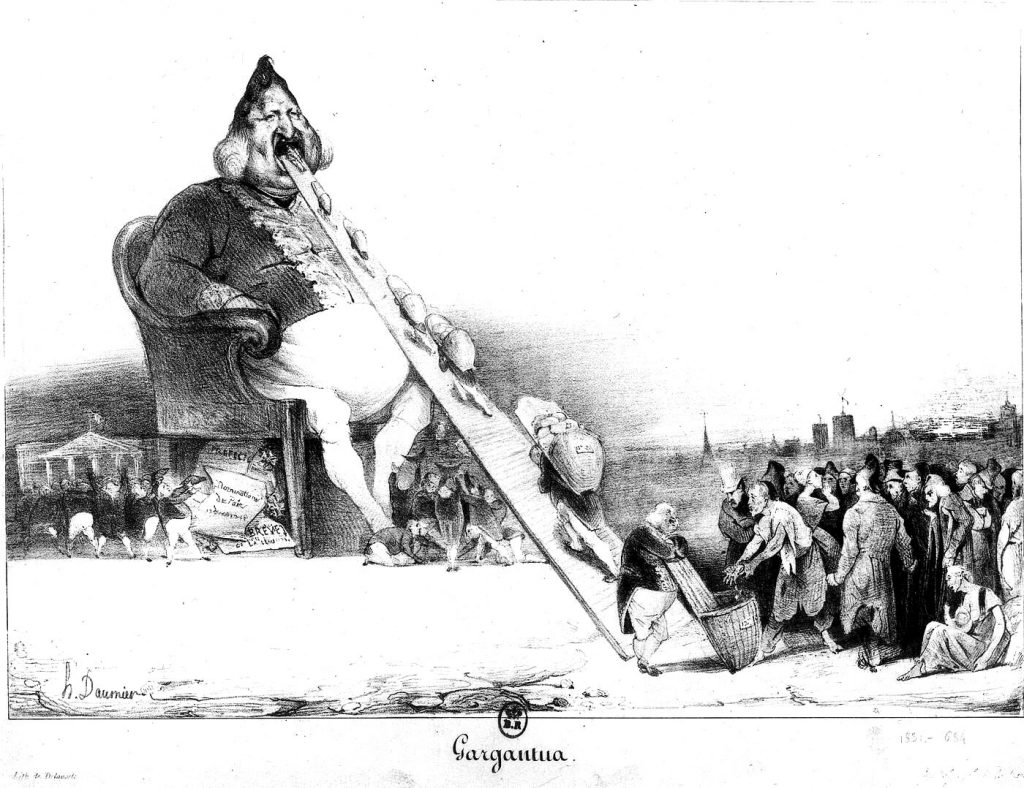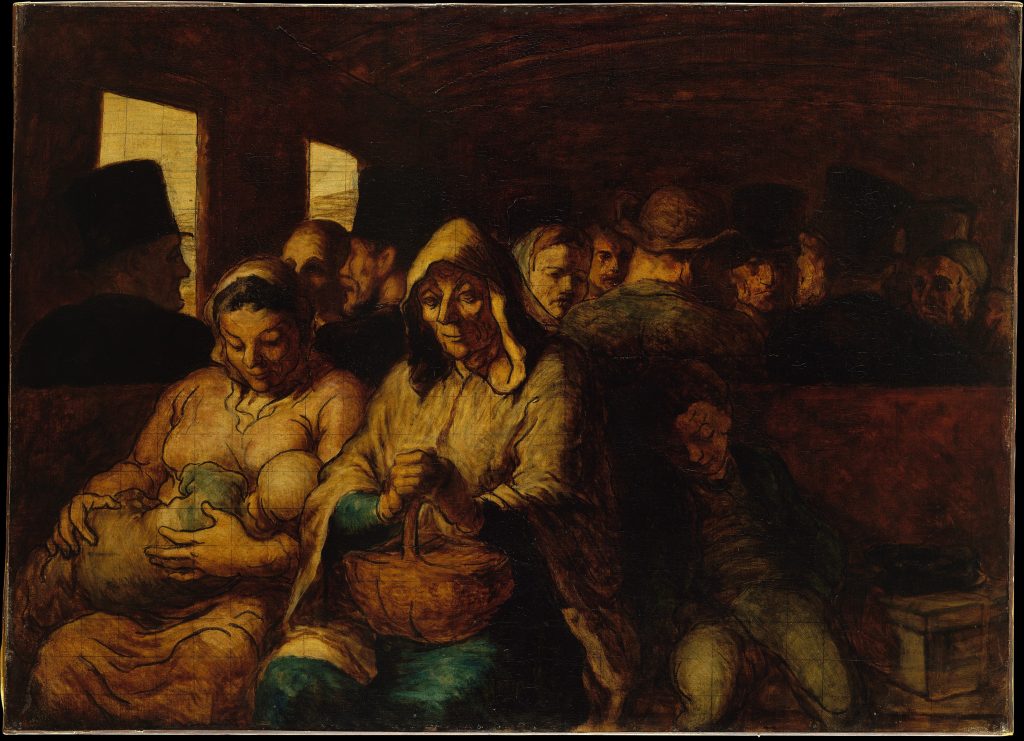Honoré Daumier (1808-1879) aka “Michelangelo of caricature” was a French artist known for his satirical cartoons criticizing Parisian society. However, due to the September Laws, which prohibited political satire, he gave up his caricatures and instead devoted his time to painting. He painted scenes of contemporary life, specifically the theatre and railways. He studied Rembrandt and Goya, however his style is more reminiscent of Goya’s later works. Unlike his wide reputation for his cartoons, his paintings were ignored while he was alive, however they greatly influenced Impressionism. He passed away of a paralytic stroke in Valmondois, Seine-et-Oise.

Daumier made this piece when he worked for the comic journal, La Caricature, which targeted the government, the law, and the bourgeoisie. This caricature of King Louis Philippe resulted in six months of prison for Daumier. I admire this drawing because of what it represents for artists vs censorship. Daumier pushed the “boundaries” too far with this one but that’s what makes me respect him.

This is another caricature of Louis-Philippe that I love. It depicts him as a pear, which is Daumier playing with the double meaning of the French word “poire”, translating to “pear” or “imbecile”. Daumier is showing the change of the King’s emotions during his reign and even poking fun at him through the exaggerated features of his droopy face and weight. Once again, Daumier is walking on eggshells with this one. I’m unfazed by these pieces of Louis-Philippe but I can only imagine the shock value these mocking caricatures had during its time.

Daumier didn’t even have to depict Louis-Philippe to piss him off. This lithograph is considered one of Daumier’s best works, illustrating the events of the Massacre of Transnonain street. The Parisian public were rioting against the government in 1834 and an infrantry captain was shot down from a house on Transnonain street. The next day soldiers went into the building and killed everyone, including seniors, women, and children. Daumier published this a couple months after the massacre, it sparked so much controversy to the point that Louis ordered all copies to be destroyed. The year after, in 1835, the September Laws were enforced.

Before the September Laws, not only did Daumier make caricatures, he sculpted political members as well. This one is of Laurent Cunin-Gridaine, the Minister of Agriculture and Commerce. His experimentation with caricature sculpture hadn’t really been done before by his contemporaries. In 1832, he started to sculpt parliamentarians as a series, molding them with great exaggeration in unbaked clay and coloured with oil paints. Daumier was excellent at pulling out specific characteristics to show individuality. This sculpture series is probably my favourite of all of Daumier’s work. They look like they could be characters in a stop motion film!

This piece best exemplifies Daumier’s interests with railway travel and the working class. The space Daumier paints is crowded and dirty, making the viewer feel claustrophobic. Interesting how a personality like Daumier’s who frequently mocked and taunted political figures, also painted pieces showing empathy. However, it also makes sense granted a big part of his job as a caricaturist was to observe society.
Sources:
https://fr.wikipedia.org/wiki/Gargantua_(Daumier)
https://www.wikiart.org/en/honore-daumier
https://search.credoreference.com/content/topic/daumier_honoré_victorin_1808_1879